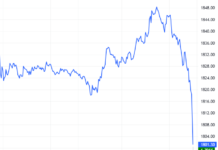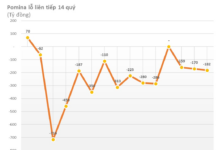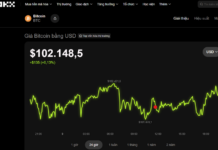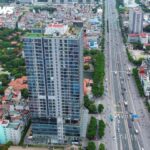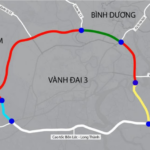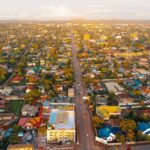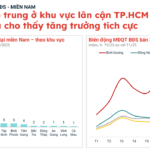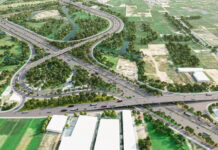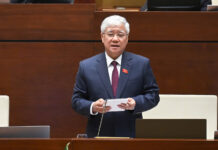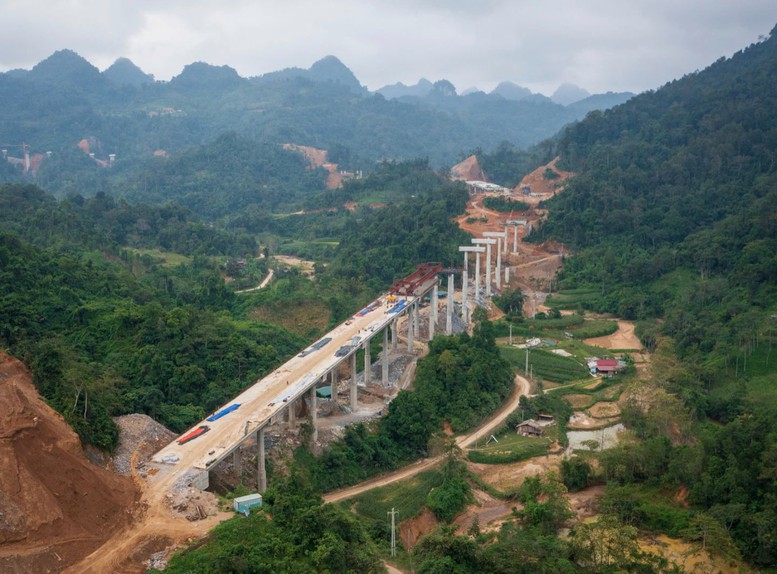
The Dong Dang – Tra Linh Expressway project spans 121 km, divided into two investment phases with a total investment of nearly VND 23,000 billion. Image: VGP/Thanh Huyen.
Over a Decade of Aspiring for an Expressway
Given its geographical location and mountainous terrain, Cao Bang, a border province, has long been considered one of the most challenging regions for transportation in Vietnam. The province’s transport system currently consists only of roads, including four national highways (QL3, 4A, 34, and 4C), along with a network of provincial and inter-commune roads.
Despite being only about 280 km from Hanoi, the journey to Cao Bang takes nearly half a day, navigating through hundreds of winding curves, steep passes, and deep valleys. During the rainy season, many road sections are prone to landslides and flooding, making the trip even more arduous and dangerous.
Speaking with a reporter from the Government’s Online Newspaper, Mr. Do Trong Khanh, Deputy Director of the Project Management Board for Transport Infrastructure Investment and Construction in Cao Bang Province, couldn’t hide his emotion as he recounted the journey of a road “heading south” to Hanoi. The idea of building an expressway connecting Cao Bang was conceived between 2011 and 2014, but it wasn’t until the 2016–2020 term that the project truly began.
“In August 2020, the Prime Minister officially approved the investment policy for the Dong Dang (Lang Son) – Tra Linh (Cao Bang) Expressway, marking a significant milestone in realizing the province’s expressway dream,” said Mr. Khanh.
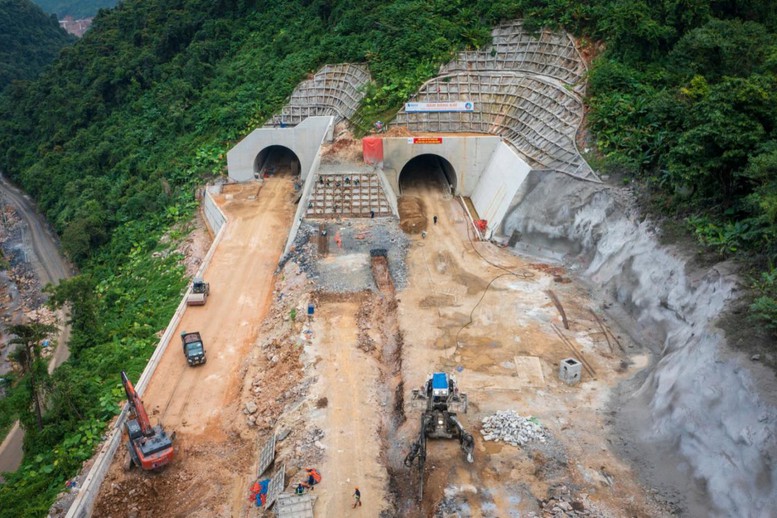
In August 2020, the Prime Minister officially approved the investment policy for the Dong Dang (Lang Son) – Tra Linh (Cao Bang) Expressway, marking a significant milestone. Image: VGP/Thanh Huyen.
While the policy was approved, the challenges of implementing the Dong Dang – Tra Linh Expressway project were just beginning. Spanning 121 km across Lang Son and Cao Bang provinces, the project faces formidable obstacles due to its karst geology and treacherous terrain. During an inspection on June 30, Minister of Construction Tran Hong Minh described it as one of the most challenging projects in the country.
Beyond the terrain, the project also faces significant financial and investment hurdles. When Cao Bang Province first issued an invitation for interest in May 2020, the number of participating investors was limited due to the complex terrain, high investment costs, and long payback period. After persistent efforts, in December 2023, the People’s Committee of Cao Bang Province announced the Deo Ca Group Consortium as the selected investor for the project.
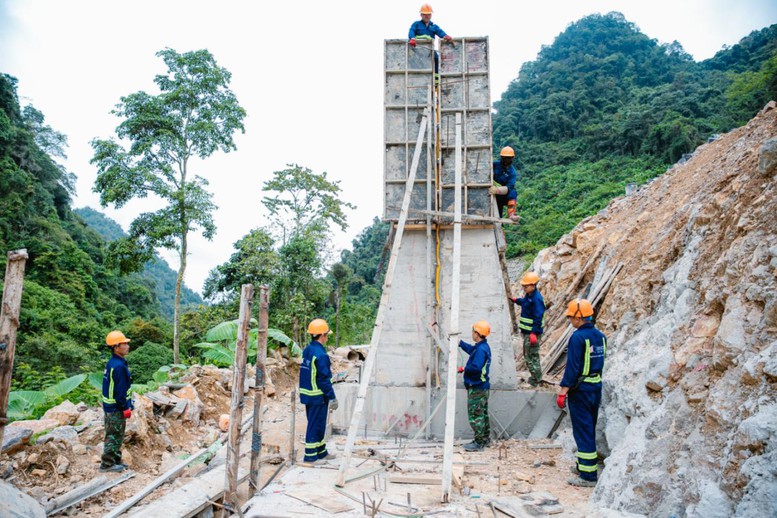
Over 3,600 engineers and workers, along with 1,600 pieces of equipment, are deployed across 276 construction sites, turning the motto “overcome the sun, conquer the rain” into a daily reality. Image: VGP/Thanh Huyen.
PPP – The Key to Unlocking Highland Projects
The Dong Dang – Tra Linh Expressway spans 121 km and is divided into two investment phases with a total investment of nearly VND 23,000 billion. Determined to commence construction in 2024, the authorities of Cao Bang and Lang Son provinces, along with the Deo Ca Group, have achieved initial success. Their efforts were recognized when the National Assembly approved a special mechanism under Resolution No. 106, allowing state budget participation in the project to reach up to 70% of the total investment, facilitating credit mobilization.
This marks the first PPP project in the country implemented under the new Public-Private Partnership (PPP) Investment Law, setting a precedent in infrastructure investment thinking. Facing capital challenges, the Deo Ca Group pioneered the PPP++ model, an innovative financial solution to optimize investment efficiency and distribute risks.
Under this mechanism, P1++ represents state capital, including central and local budgets, accounting for over 50% of the total investment; P2++ is equity from private and state-owned enterprises; while P3++ involves capital raised through credit, stock issuance, bonds, BCC contracts, or foreign investment. The flexible combination of these three capital components not only ensures project progress but also sets a new precedent in mobilizing and managing national infrastructure investment resources.
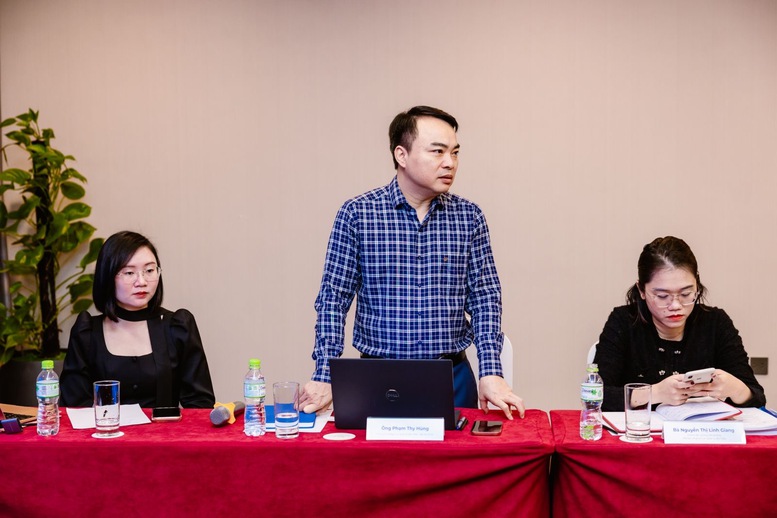
Mr. Pham Thy Hung, Deputy Director of the Bidding Management Department, Ministry of Finance. Image: VGP/Thanh Huyen.
According to Mr. Pham Thy Hung, Deputy Director of the Bidding Management Department at the Ministry of Finance, this is one of the most successful PPP investment projects in challenging areas.
“Since the project began in early 2024, many new PPP regulations have been reviewed and adjusted to create a favorable legal framework. The Dong Dang – Tra Linh Expressway exemplifies transparency and flexibility, helping to remove infrastructure investment bottlenecks in the northern mountainous region,” affirmed Mr. Hung.
Divided into two phases, the Dong Dang – Tra Linh route spans 121 km. Upon completion, travel time from Cao Bang to Hanoi will be reduced from 6–7 hours to approximately 3.5 hours.
Phase 1 of the project, covering 93.35 km, began on January 1, 2024, traversing complex terrain. Phase 2 will expand the entire Phase 1 route and construct 27.71 km of new expressway connecting to the Tra Linh border gate.

The Dong Dang – Tra Linh Expressway not only connects transportation but also bridges trust, aspirations, and responsibilities between the government, businesses, and the people. Image: VGP/Thanh Huyen.
Revitalizing the Nation’s Frontier
The bustling activity across construction sites has breathed new life into the nation’s frontier. With over 3,600 engineers and workers, along with 1,600 pieces of equipment, deployed across 276 construction sites, the motto “overcome the sun, conquer the rain” has become a daily reality. As bridges and tunnels emerge amidst the vast forests, the significance of “connection” becomes increasingly evident. The Dong Dang – Tra Linh Expressway not only connects transportation but also bridges trust, aspirations, and responsibilities between the government, businesses, and the people.
Ahead of the scheduled route opening on December 19, the project aims to complete 10 million cubic meters of excavation and 7 million cubic meters of embankment. However, recent consecutive floods in Lang Son and Cao Bang provinces have directly impacted the project’s progress and assets. Despite these challenges, the Deo Ca Group remains on track to open the route by December 19, 2025.
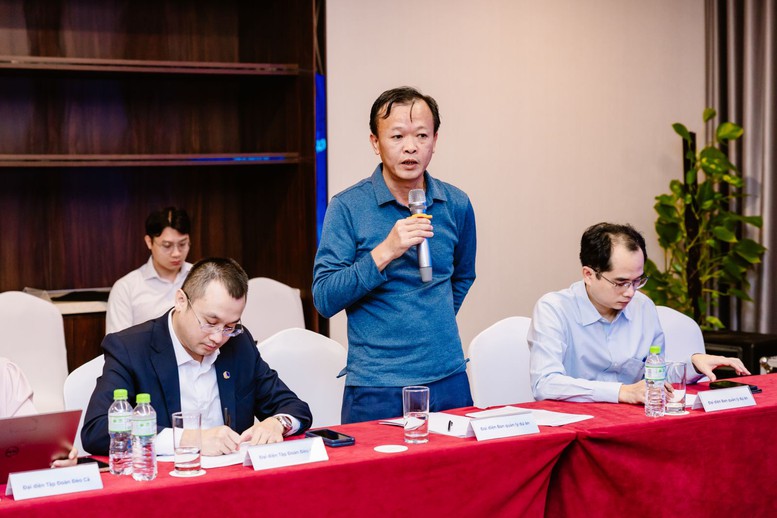
Mr. Do Trong Khanh, Deputy Director of the Project Management Board for Transport Infrastructure Investment and Construction in Cao Bang Province. Image: VGP/Thanh Huyen.
According to Mr. Nguyen Duc Tuan, Deputy General Director of Dong Dang – Tra Linh Expressway Joint Stock Company, the company has identified critical paths for the project based on the set timeline. They are focusing on financial resources, technical solutions, and additional personnel and equipment to adhere to the schedule. Weekly progress review meetings are held to assess actual progress and replace underperforming contractors if necessary.
The collaboration between Cao Bang and the Deo Ca Group extends beyond a single BOT project; it exemplifies a new public-private partnership model. In line with Resolution 68 of the Politburo, the government and businesses share responsibilities and work towards infrastructure development and economic growth in border regions.
As roads gradually open up in the border forests, the doors to integration, trade, tourism, and investment in the entire Northeast region are also opening. The Dong Dang – Tra Linh Expressway is expected to be a crucial step in realizing the economic development goals of the midlands and northern mountainous regions, removing infrastructure bottlenecks, attracting businesses, and fostering sustainable livelihoods for local communities.
October 2025 YTD: CPI Rises 3.27%; Core Inflation Up 3.20% Year-on-Year
The Consumer Price Index (CPI) for October rose by 0.20% compared to the previous month, primarily driven by higher food prices in provinces and cities directly impacted by post-storm flooding. Additionally, increases in out-of-home dining costs, reflecting rising input material expenses, and continued tuition hikes at non-public educational institutions contributed to the uptick. Over the first ten months of 2025, the average CPI increased by 3.27% year-on-year, while core inflation rose by 3.20%.
Real Estate Expert: The Era of ‘Flip-and-Sell’ Investing is Over
According to experts, the real estate market is shifting towards sustainable development, transitioning from short-term speculation to long-term investment.
Emerging Real Estate Satellite Hubs: A Vibrant Ring Around Ho Chi Minh City
The real estate market is buzzing with activity in the satellite regions surrounding Ho Chi Minh City, as anticipation builds ahead of the city’s expansion. Leading the charge is the former Binh Duong province, topping the charts with an impressive index of 100. Close behind are Dong Nai (38), Ba Ria – Vung Tau (34), and Long An (28), collectively forming a vibrant “satellite belt” around the bustling metropolis.

